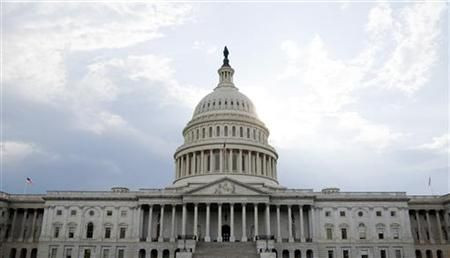The Federal Budget Deficit Explained, In One Infographic

The Bush-era tax cuts are often cited as a major source of the federal budget deficit, which is projected to reach $1.2 trillion in 2012. While Democrats and Republicans alike tend to point fingers when it comes to explaining how the U.S. became so buried in debt -- the size of the national debt is now around 15 trillion dollars, equivalent to the size of the entire economy -- vless than decade after experiencing record budget surpluses under President Bill Clinton (corporate tax loopholes! Big government spending!) the National Priorities Project reports that it all comes down to one simple factor: an extreme lack of revenue.
As a result of a series of tax cuts -- including a growing exploitation of deductions, credits and loopholes -- combined with the economic instability caused by the Great Recession, federal revenue as a share of the U.S. economy has declined to its lowest level in almost half a century, reports the nonpartisan organization, which is dedicated to bringing transparency to the federal budget. After all, when fewer people are employed, fewer people are paying taxes.
But even if the recession hadn't occurred, the federal deficit still would still be sizable, as the National Priorities Project demonstrates in the following infographic:
© Copyright IBTimes 2024. All rights reserved.





















